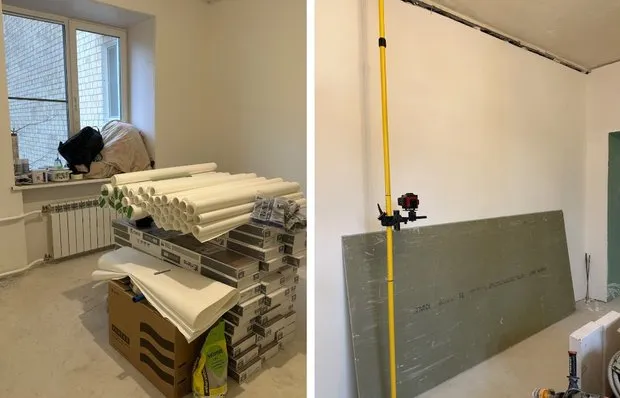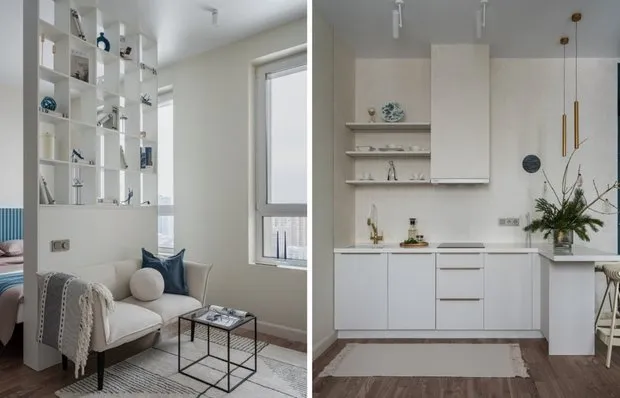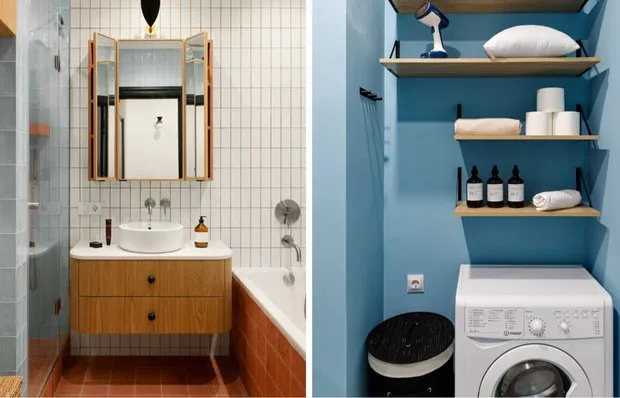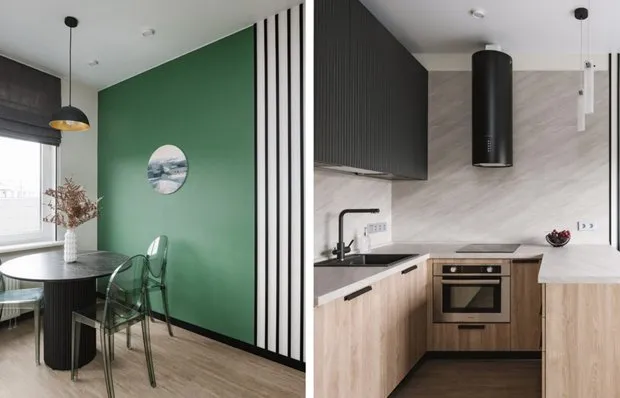There can be your advertisement
300x150
Why Repair Costs Rose by 40%: How to Do Quality Renovation in 2025 Without Going Bankrupt
The key is to remember that savings should be reasonable
You walk into a building supply store and freeze at the shelf of laminate that cost twice as much just a year ago. Or you open a contractor's estimate and realize that the same money could have renovated not one, but two rooms last year. No, you're not imagining it — repair costs have really soared, and not by some symbolic percentage. According to market analysts, the cost of renovation work and materials in Russia has risen by an average of 35-40% over the past year. Why did this happen, what to expect next, and how to make a quality renovation without selling your kidney?
Key points from the article:
Main reasons for price increases: rising costs of imported components, shortage of skilled labor, and inflation in the construction sector;
The biggest price jumps affected finishing materials (+45%), plumbing (+38%), and electrical work (+32%);
Experts predict price stabilization in 2025 with growth of no more than 10-15% annually;
Phased renovation with proper logistics can save up to 25% of the budget;
Domestic manufacturers are actively filling the market with cheaper analogs of imported materials, which are 20-30% cheaper.
What happened to the market and why everything is so expensive
The main reason — disruption in supply chains and changes in logistics routes. Have you noticed that a box of Spanish tiles, which used to be shipped directly, now makes its way through three countries? This is not the whims of manufacturers but a harsh necessity that increases final costs by 15-20%.
The second factor — shortage of skilled labor. After many workers left the market from neighboring countries, construction crews have faced a serious shortage of personnel. Skilled craftsmen, especially those with good reputations, now dictate their terms. Labor rates have risen by an average of 25-30%.
Another reason — rising costs for equipment used in manufacturing building materials. Imported machines and spare parts have increased in price by 50-70%, which inevitably affects the final cost of the product.
"Previously, our business profitability was 20-25%, now we work with a margin of only 10-15%, and still customers are shocked by the prices," — such comments can often be heard from representatives of construction companies.
What rose the most and where to expect stabilization
Not all categories in the renovation services market have risen at the same rate. Leaders in price growth include:
Premium finishing materials (+45-50%);
Imported plumbing fixtures and taps (+38%);
Electrical systems and smart home solutions (+32%);
Decorative elements and interior items (+27%).
Some categories have shown more moderate growth:
Raw materials (cement, sand, plaster) +15-20%;
Economy floor coverings +18%;
Demolition work costs +10-15%.
Financial analysts and market participants predict that in 2025 we will see price stabilization. Expected growth is no more than 10-15% annually, which is significantly lower than current levels.
Three main mistakes that make your renovation twice as expensive
Mistake #1: Complete lack of planning:
"Let's start and figure it out later" — an approach that guarantees a 30-40% increase in your budget. Lack of a clear project leads to rework, additional purchases, and idle time for workers, which you still have to pay for.
Mistake #2: Buying all materials at once:
Intuitively it seems better to buy everything at once to avoid further price increases. In practice, this leads to some materials spoiling during storage, others becoming unnecessary, and money being frozen for several months.
Mistake #3: Cutting costs on professionals:
Trying to save money on designers or projectors often results in much larger costs for fixing errors. According to statistics, every ruble invested in professional design saves 3-4 rubles during implementation.

Design: Olga Golubeva
Strategy of reasonable savings: what works in 2025
Phase 1: Planning down to the screw
It's important not just to have a general idea of the future renovation, but a detailed project with precise volumes of work and materials. This will help you avoid overspending and situations where, in the middle of renovation, you realize there's not enough money for something.
A useful tool — specialized software for material calculation, which helps determine exact volumes with an error margin of no more than 5%.
Phase 2: Breaking down renovation into logical phases
Break the whole process into stages and identify which materials are needed for each of them. This allows you to optimize cash flow and avoid freezing funds in materials that will be used several months later. Example breakdown:
- Demolition and re-planning;
- Replacing utilities;
- Raw finishing;
- Finishing touches;
- Installing plumbing and electrical systems;
- Furniture and decor.
Phase 3: Monitoring sales and promotions
Create a table of necessary materials with approximate purchase dates and track sales in several stores. A significant portion of materials can be purchased at discounts of 20-30% if not bought at the last minute.
Interesting fact: many construction stores offer seasonal discounts on specific product categories. For example, tiles often become cheaper in February-March, and floor coverings — in August-September.
Phase 4: Optimizing work with contractors
If you're working with a crew, propose payment not by days but by completed stages of work. This motivates workers to complete tasks quickly and allows you to control quality at every stage. It's also worth considering comprehensive crews instead of individual specialists — this minimizes downtime and conflicts between different craftspeople.
What you absolutely cannot cut costs on even in a crisis
Despite your desire to reduce expenses, there are categories where cost-cutting can backfire:
Basic engineering systems. Saving on the quality of pipes, wiring, and ventilation can lead to serious problems, which will cost much more to fix.
Waterproofing. Especially in bathrooms and kitchens — leaks can nullify all your efforts to renovate.
Surface preparation. Poor plastering or screed will result in cracks and peeling of finishing materials quickly.
- Entry doors and windows. This is not just about aesthetics but energy efficiency, safety, and sound insulation of your living space.
Alternative materials: what can be replaced without losing quality
Good news: the market is actively adapting to new conditions, and there are more and more quality domestic analogs of imported materials.
Instead of Italian ceramic tiles — white Belarusian (savings up to 40%);
Instead of German plumbing fixtures — products from Turkey and UAE with comparable quality (savings 25-30%);
Instead of Swiss hardware — Turkish analogs (savings up to 35%);
Instead of Spanish and Italian wallpapers — Russian wallpaper factories that have adopted modern technologies and design (savings 30-40%).
It's important to distinguish between cheap fakes and decent alternatives. Read reviews, request quality certificates, and don't hesitate to ask sellers about the country of origin of components.
What will happen with prices next: what to expect by the end of 2025
Market participants and experts agree that we've already passed the peak of price increases in renovation. In the coming months, a slowdown in growth rates and even a small correction in some segments are expected.
Factors that will influence prices by the end of 2025:
Expansion of domestic material production (expected price reduction in finishing materials segment by 7-10%);
Adaptation of logistics chains (expected reduction in transport markups by 5-8%);
Seasonal fluctuations in demand (summer and early autumn traditionally show some price reductions).
At the same time, the cost of labor will likely continue to grow slowly due to the ongoing shortage of skilled workers.
If you're planning a renovation and can delay it without critical consequences for the property, the optimal time to start might be late summer — early autumn 2025, when some price stabilization and new offers from domestic manufacturers are expected.
However, if it's about necessary work or preparing property for sale, don't delay — with a proper approach to planning and procurement, renovation can be done at minimal overpayment even in current conditions.
The key is to remember that savings should be reasonable. Too cheap a renovation often ends up requiring rework within a year or two, which in the end costs significantly more.
Cover: Design project by Alexandra Zhuravleva
More articles:
 Flawless Finishing Touches: 7 Key Points for Final Renovation Stage
Flawless Finishing Touches: 7 Key Points for Final Renovation Stage Thoughtful to the Centimeter: 5 Engineering Solutions That Will Save Your Nerves
Thoughtful to the Centimeter: 5 Engineering Solutions That Will Save Your Nerves How to Decorate a Compact Apartment: 6 Great Ideas
How to Decorate a Compact Apartment: 6 Great Ideas Where to Store Things in a Small Bathroom: 10 Cool Solutions
Where to Store Things in a Small Bathroom: 10 Cool Solutions Budget Renovation Doesn't Mean Poor Quality: Secret Tips for Saving Money Without Sacrificing Standards
Budget Renovation Doesn't Mean Poor Quality: Secret Tips for Saving Money Without Sacrificing Standards Where to Save and When to Pay More in 2025: Analyzing Every Expense Category
Where to Save and When to Pay More in 2025: Analyzing Every Expense Category 7 budget-friendly stylish ideas for a cozy and functional interior
7 budget-friendly stylish ideas for a cozy and functional interior Small Inspiring Bathroom in a 40 m² Studio Apartment
Small Inspiring Bathroom in a 40 m² Studio Apartment